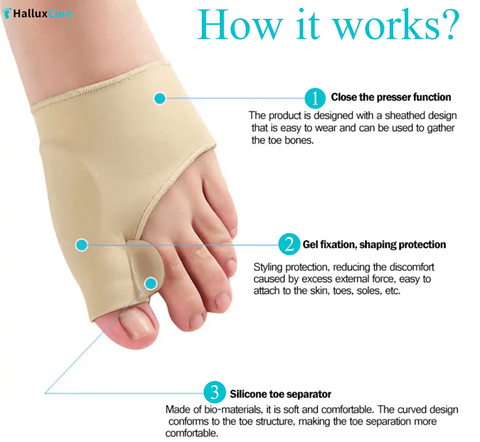Bunions in Kids: What Parents Need to Know About Footwear and Prevention
Discovering bunions on your child’s feet can be alarming, especially when they’re as young as 11 years old. A concerned parent recently shared their story on Reddit, linking their daughter’s emerging bunions to wearing Converse Chuck Taylors for an extended period. This raises an important question for parents: How can footwear influence bunion development in children, and what steps can you take to prevent or manage this condition? Let's dive into the topic and explore actionable insights.
---What Are Bunions and Why Do They Develop?
Bunions, or hallux valgus, are bony bumps that form at the base of the big toe, often causing discomfort and altering foot alignment. While bunions are more common in adults, children can develop them too, often due to genetics, improper footwear, or abnormal foot mechanics.
Common Causes of Bunions in Kids:
- Genetics: A family history of bunions increases the likelihood of development.
- Footwear Choices: Narrow, tight, or unsupportive shoes (like Converse Chucks) can exacerbate pressure on growing feet.
- Pronated Feet: Flat feet or excessive inward rolling of the foot can also contribute to bunion formation.
Are Converse Chucks Causing the Problem?
Converse Chuck Taylors are trendy and versatile, but their design may not be ideal for growing feet:
- Flat Sole: Lacks arch support, increasing strain on the ball of the foot.
- Narrow Toe Box: Compresses toes, potentially encouraging bunion formation.
- Minimal Cushioning: Offers little shock absorption, which can stress joints and ligaments.
While these shoes might be fine for occasional use, wearing them "non-stop" for a year, as mentioned in the Reddit comment, is not recommended for children with developing feet.
---How to Prevent and Manage Bunions in Children
If you’ve noticed bunions developing on your child’s feet, early intervention is key. Here are some tips to prevent further progression and alleviate discomfort:
1. Choose the Right Footwear
- Opt for shoes with a wide toe box to give toes room to move.
- Look for shoes with arch support to promote proper alignment.
- Avoid flat, unsupportive shoes for daily wear; instead, consider well-cushioned sneakers.
2. Encourage Barefoot Play
- Walking barefoot (on safe, soft surfaces) helps strengthen foot muscles and improve natural alignment.
3. Introduce Orthopedic Supports
- Insoles or bunion sleeves can provide additional support and reduce pressure on the joint.
4.9 ⭐⭐⭐⭐⭐ ( 1843 reviews )
4. Consult a Podiatrist
- A professional can assess your child’s feet and recommend treatments, such as physical therapy, custom orthotics, or, in severe cases, surgery (though this is rare for children).
5. Encourage Foot Exercises
- Simple exercises, like toe stretches and picking up objects with toes, can improve flexibility and strength.
When to Seek Professional Help
Parents often wonder if they should wait or act when noticing early signs of bunions. Here’s when it’s time to consult a podiatrist:
- Persistent pain or difficulty walking.
- Rapid progression of the bunion.
- Visible misalignment of the big toe.
Products That Can Help Alleviate Bunion Pain
Supporting your child’s foot health may involve using specially designed products. Consider the following options from HalluxCare for pain relief and prevention:
If you're looking for relief from bunion pain, consider using the Orthopedic Bunion Pain Relief & Correction Sleeve , which provides support and helps to alleviate discomfort.
For additional protection, the Tailor's Bunion Bunionette Pain Relief Protection Sleeves are designed to offer comfort and protection for bunionette pain.
To nourish and soothe the skin around bunions, as well as to promote healthy hair, consider the Jamaica Black Castor Oil Soothing Oil . Known for its moisturizing and anti-inflammatory properties, it helps alleviate discomfort around bunions and supports hair growth and scalp health.
---Final Thoughts and Call to Action
Caring for your child’s feet is an investment in their long-term health. Bunions, if caught early, can often be managed with lifestyle changes and the right tools. By choosing proper footwear, encouraging foot-strengthening activities, and using supportive aids, you can help your child avoid serious complications.
What has been your experience with bunions in children? Have you tried any specific footwear or treatments that made a difference? Share your thoughts and insights in the comments below—your story could help another parent navigating the same issues!



